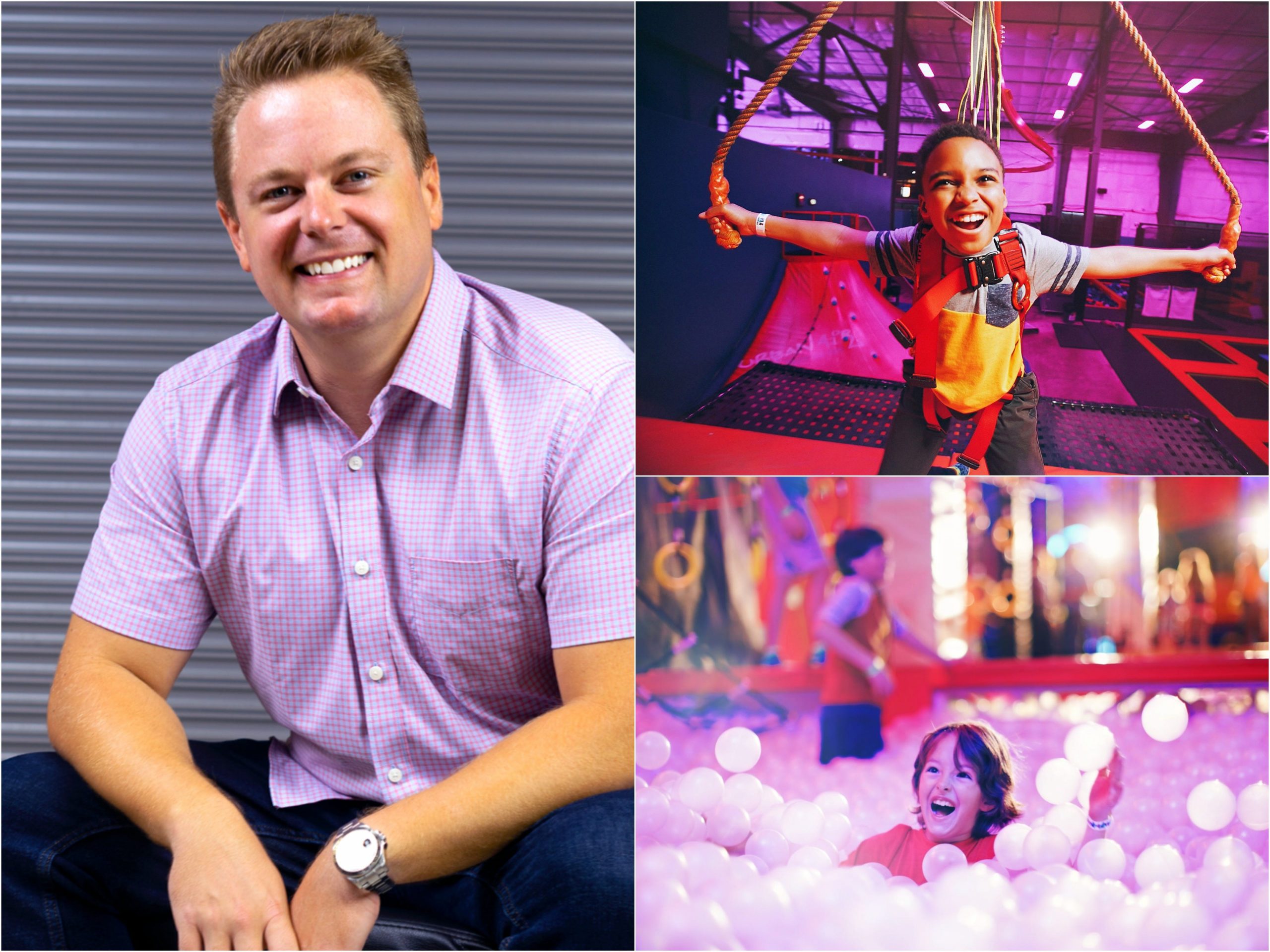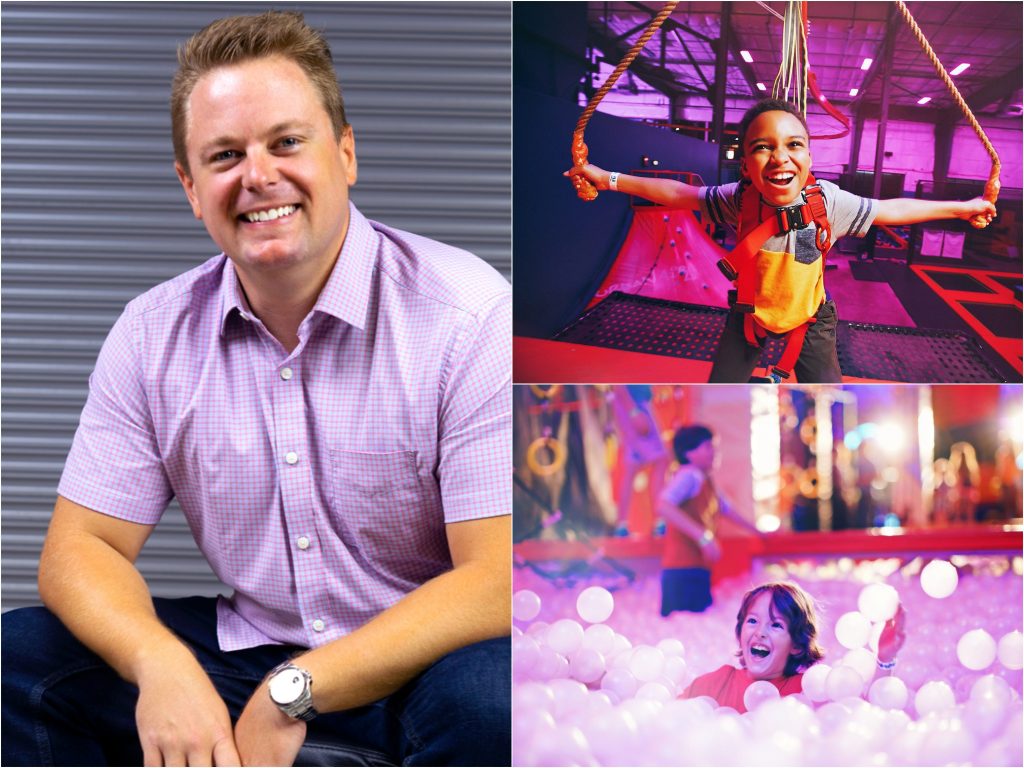
- Michael Browning, 36, started a company designing websites while still in high school.
- In 2011, he started Urban Air, an indoor-adventure-park franchise.
- This is how he grew it and branched out in the pandemic, as told to Chris Stokel-Walker.
This as-told-to essay is based on a conversation with Michael Browning, a 36-year-old from Texas, about building his business. It has been edited for length and clarity.
If you were to talk to my parents or people who knew me as a kid, they'd tell you I was always working on businesses.
When I was a young kid, my sister and I went door-to-door and sold beaded bracelets. As I got older, I got into baseball cards with my father. When I got my first computer in high school, I started a company designing websites.
On my computer I also played "Roller Coaster Tycoon." This game allowed you to not only just design your own roller coasters, but design an entire theme park. You learned about pricing, customer satisfaction, all these different things. Little did I know I would grow up and play it in real life.
I had started a data and analytics company out of my dorm room in college. It was on my travels for that that I saw one of the world's first trampoline parks. I thought there was a business opportunity there.
Although I didn't invent the trampoline park — a giant play area where almost all the surfaces are trampolines — what I did was perfect and scale that offering.
I opened my first under the Urban Air brand in South Lake, Texas, in 2011. Back then, banks thought I was crazy. I couldn't get a loan for these trampoline parks. I had to use all cash.
But we paid back our original investment in the project in 10 months, and then we reused that capital to open additional locations around the Dallas-Fort Worth area.
What I learned in owning three locations is that you can't be everywhere at the same time. So I began to create systems, processes, and procedures to train staff on how to run these facilities. That laid the foundation for our franchising system.
People were coming into Dallas-Fort Worth to visit friends and family on the holidays or over the summer, and would visit Urban Air. Then they would go home and be like, "Man, I wish we had one of those." We started getting phone calls from people asking: "Will you open one of these for us in our market?"
A gentleman from Wichita, Kansas, called me in early 2014 and asked to franchise the company. He opened his facility on December 19 that year. We've never looked back.
It takes around $3.2 to $3.4 million on average to open one of our parks. They operate at around 20 to 30% operating margin. Many Urban Air franchisees open more than one location.
We use data and analytics to go into the correct markets — ones where there are a lot of kids aged 6 to 12, and women in childbearing years and having babies. We know that a kid will age out of the Urban Air product somewhere between 12 and 14.
In 2016, we started seeing our competition copying our concept. So in February 2017, we launched an indoor-adventure park. Since then, we've been doubling the size of the company every year. We no longer own, open, or franchise trampoline parks. We exclusively franchise adventure parks with indoor skydiving, indoor go-karting and indoor coasters, virtual reality, all kinds of amazing attractions.
We put together an action plan in late January 2020 about what would happen if the world shut down. We hoped we'd never have to use it when we presented it to the board on March 3, 2020. On March 17, we closed down every one of our facilities. We stayed closed until early June.
I started talking to other founders who weren't having the same type of success that we were having in weathering the COVID storm. I began thinking, what if I could bring brands under one roof, and we can all leverage this platform that we had built initially for Urban Air?
At the same time, my three kids — ages 10, 7, and 2 — were getting antsy and I was trying to find things to entertain them. I thought: "Man, this is too hard. It's too fragmented. A parent is left to do their own research to find all the places to take their kids."
I started reaching out to founders that I respected in the world of kids. One of the companies was Snapology, which teaches science, technology, engineering, arts, and math. We acquired it.
I bought an infant and child gym brand, The Little Gym, and Premier Martial Arts, a kids' martial-arts brand, soon after. We set up a new company, Unleashed Brands, to act as the umbrella organization.
Today, we have 1,300 franchises, serving more than 25 million kids and $800 million in systemwide revenue. The main chunk of the annual revenue — around $468 million — is from Urban Air. Around $150 million of it comes from The Little Gym, and the rest is from Snapology and Premier Martial Arts.
The most important thing we've learned is that parents are our customers, and their kids are our users. We learned how to market to parents, serve them, and grow their kids, so that they have affinity with the brands.
Every brand that we bring in under Unleashed Brands will fall into one of three categories: helping kids learn, helping kids play, or helping kids grow. And we'll keep growing, too.
